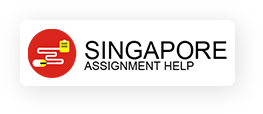| University | National University of Singapore (NUS) |
| Subject | Principle of Finance |
Assignment (Individual) – 20 Marks
This assignment is designed to assess students’ knowledge on Portfolio Theory (Topic 3). Students are expected to assess risk and return statistics for individual stocks and for portfolios.
Question – 20 Marks
On Country X’s stock market, there are several stock indices. One of these indices is the Mini20 Index with an expected stock market return of 9% – RM, and a variance of 0.0225. The Treasury bill rate is 2%-RF.
Consider two firms in Country X, Abletronics and Huttle operating in the highly competitive car lithium battery industry. There are some reports of car fires and explosions in electric vehicles. Abletronics stock has a market capitalization of $100 million and an expected return of 15%.
Huttle is being led by a team of industry experts. The company’s trademark lithium batteries have the shortest charging times in the world. Huttle stock has a market capitalization of $50 million. The covariance (COMOVEMENT) of Huttle’s stock return with the market return was derived as 0.01125. The average historical return of Huttle stock was 5% and the beta value is 1.86.

Hire a Professional Essay & Assignment Writer for completing your Academic Assessments
Native Singapore Writers Team
- 100% Plagiarism-Free Essay
- Highest Satisfaction Rate
- Free Revision
- On-Time Delivery
Required:
a. Assess if Huttle has under-performed or outperformed the CAPM.
If so, calculate the extent of under-performance or outperformance in percentage returns (5%) – EITHER. RED OR BLUE DOT. Critique the use of the CAPM to derive the required return (RF, RM, BETA) of Huttle stock. Provide at least 3 critiques – GO INTERNET DO RESEARCH ON 3 JOURNAL ARTICLES, ONE OF EACH CRITIQUE. TGT WITH IN-TEXT CITATION AND END OF TEXT CITATION (REF LIST).
b. Firm Zing operates in the same industry as firm Abletronics. The two companies’ business risk are similar. However, in addition to its operating assets, Zing holds $50 million in risk-free treasury bills. Zing’s market capitalization is $300 million.
Compute Zing’s beta value – 1.86.
c. Zing sold its treasury bills (50MIL) and used the cash proceeds to purchase all of Huttle’s stock (50MIL). Assume Huttle stock is bought for its market value.
i. Compute the value of the conglomerate Zing-Huttle.
ii. Compute the beta of the conglomerate Zing-Huttle – ZING OP ASSET = 1 ASSET, ZING HUTTLE OP ASSET = 1 ASSET, USE PORTFOLIO BETA EQN.

iii. Compare the risk of Zing and Zing-Huttle and explain any differences – COMPARE RISK LEVEL BEFORE AND AFTER AND EXPLAIN/DESCRIBE THE DIFFERENCES.

Note:
- To provide all relevant formulae and to show all workings with accompanying explanations.
- Word count requirement: Maximum 1,000 (actual word count to be stated on the cover page of the assignment). – 780-800 NORMAL – COVER PAGE, REF LIST, APPENDIX IS NOT COUNTED.
- Minimum number of references: 3 – PART A.
Buy Custom Answer of This Assessment & Raise Your Grades
Looking for Plagiarism free Answers for your college/ university Assignments.
- NCO205 User-Centred Design: Human Factors and Design Thinking Tutor-Marked Assignment-01 Semester July 2025
- ECE200 Supporting Sensory and Motor Development End-of-Course Assessment – July Semester 2025
- 7WBS2007-0901-2025 Human Resource Management Assignment 2 Brief 2025
- Bachelor of Engineering in Electrical and Electronic Engineering Assignment Brief
- MKT373 Strategic Content Management End-of-Course Assessment – July Semester 2025
- HRM335 Leadership Development End-of-Course Assessment – July Semester 2025
- EL1101E The Nature of Language Individual Essay Guidelines Semester 1, AY2025/2026
- The Problem of Poverty Essay – Comparing Differential Association and General Strain Theories
- EMT223 Venue Management in Performing Arts Spaces Tutor-Marked Assignment 02 July 2025 Presentation
- FinTech Individual Assignment: Power Dynamics and Climate Transparency in Digital Carbon Markets

